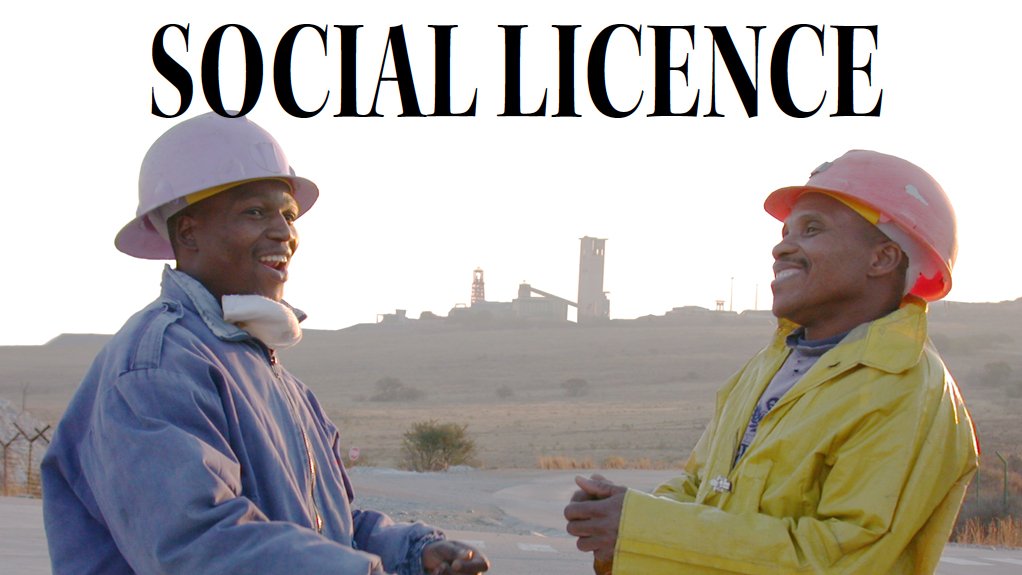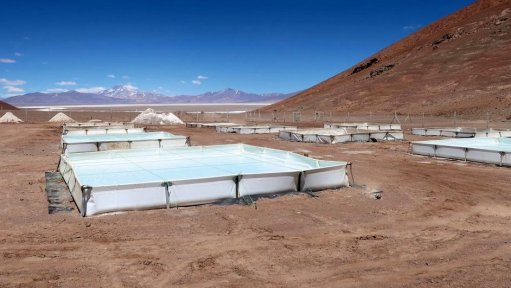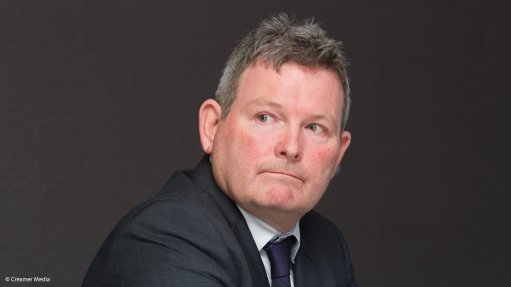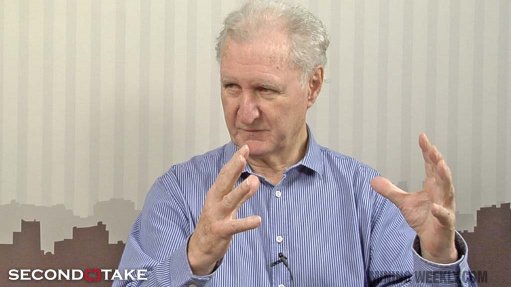More holistic model needed if sustainability is to be hard-wired into mining
Mining operations, which are often located in sparsely populated and remote areas, can be a source of livelihood and wellbeing for many people. But sustaining the positive impacts and limiting the downside risks remains an ongoing problem for near-mine communities, policymakers and mining companies.
For emerging nations, such as those in Africa, mines attract foreign direct investment, domestic investment, foreign earnings and government revenues. They also provide a means of stimulating local economic activity, while creating employ- ment and contributing to infrastructure and services. But such operations also attract hazards, both social and economic, while the pit-to-port infrastructure often associated with extractive industries is not generally designed to support the nonmining economic activities required to sustain livelihoods beyond mine closure.
Sustainability itself is a concept that is not easily and narrowly defined. However, it can be summed up as the collaborative involvement of multiple stakeholders towards maximising a mining company’s contribution to the wellbeing and benefit of its host society, as well as the environment and the economy.
The International Council on Mining and Metals (ICMM), which is dedicated to improving sustainable-development performance of the mining, minerals and metals industries, believes the focus cannot be strictly on how mining can be sustained, as all individual mining operations have a finite life span. Instead, attention should be given to how mining, minerals and metals can contribute to sustainable development.
This opinion is a conceptual shift away from a singular analysis, concerned with the mitigation of impacts to a more comprehensive analysis that looks at the wider contribution of the industry and its products.
ICMM president Dr Anthony Hodge tells Mining Weekly that the council’s focus on contribution is a “tougher but fairer approach”, as it demands from mining companies a demonstration of positive impacts and not just the mitigation of negative impacts.
“Such an approach is essential if mining- and metals-related activities are to achieve a net positive contribution to the wellbeing of communities and the ecosystem in the long term – something that is both demanded by society and sought by industry leaders,” he points out.
Society’s expectations of the industry’s performance are already high and continue to increase as communities place pressure on mining companies to improve their standards of social and environmental performance, and become more transparent. Further, communities – which historically have played a marginal role in decision-making – are now participating more in these processes. In some cases, this will inevitably lead to more stringent laws and regulations, says Hodge.
Simultaneously, the nature and fairness of the distribution of benefits from mining and metals operations is being challenged, he adds.
This means that the mining industry needs to focus on gaining the appreciation and trust of a far wider constituency than it currently has. The industry is moving towards becoming a development partner rather than an isolated extractor of resources. As a development partner, collaboration is essential, as the responsibilities required by sustainable practices cannot rest on the shoulders of a single party.
Therefore, for companies to be effective in addressing the complex issues underlying the social and environmental implications of modern mining and metals operations, industry, governments and host communities need to have a shared vision, and all need to play a part in implementing initiatives.
Further, all of these partners need to carefully assess the results once they are achieved – and not just track the philanthropic contributions that are offered, says Hodge.
Community Opposition
University of the Witwatersrand’s (Wits’) Centre for Sustainability in Mining and Industry (CSMI) director Professor Caroline Digby highlights that a tick-the-box approach to management will not work for sustainable development going forward. Rather, she believes that long-term thinking and under- standing is necessary to build partnerships that are able to overcome the unintended consequences of well-meaning initiatives that were poorly thought through.
The CSMI, which is part of Wits’ School of Mining Engineering, focuses on three key sustainable development themes, namely the contribution to socioeconomic development, health and safety and environmental stewardship.
Digby highlights the importance of securing and maintaining social licence to operate as an important driver underpinning industry’s performance. Recent research from the University of Queensland, in Australia, and the JF Kennedy School of Government at Harvard, in the US, confirms that conflict in the mining industry has become a major contributor to the increasing cost of projects, with a series of flagship projects worldwide abandoned or delayed in the face of community opposition.
Citing examples from Australia, India, Peru and Chile, the research demonstrates that community mobilisation can cost mining companies more than $20-million a week, owing to delays for mining projects valued between $3-million and $5-billion.
Other sustainability drivers include the increasing sophistication and mobilisation skills of civil society groups and watch- dogs worldwide, says Digby, adding that pressure from large institutional investors and financiers, such as the International Finance Corporation, is also persuading mining companies to adhere to international sustain- ability standards.
Mitigating Risks
He highlights that there has been a significant tightening of safety, health, environment and community regulations worldwide in response to growing concerns about the poor safety performance of mining companies and high- profile accidents at several operations.
In Africa, however, these regulatory frameworks are still somewhat piecemeal and the capacity of the various regulatory agencies to enforce and monitor compliance is generally weak, she says.
The biggest challenge facing industry stakeholders is the need to ascertain the roles and responsibilities of all players, which ideally would reflect responsible industry members, effective governments and organised communities. CSMI cites other challenges that the South African mining sector needs to focus on, including the quandary of how mining benefits are to be shared among stakeholders, and the management of mining’s long-term environmental impacts, as well as mine closure.
The South African mining industry, Digby argues, needs to focus its ongoing research on what has actually worked in practice – bringing together case studies that draw out useful lessons from both successes and failures.
Anglo American Platinum (Amplats) recently made available evaluative research it conducted on its strategy to improve educational outcomes in the area of maths and science education in near-mine communities where Amplats operates on the Rustenburg platinum belt.
Meanwhile, for parent company Anglo American, which is one of the founding members of the ICMM, sustainability is about creating and maintaining conditions under which its employees, its business and society all benefit. This fulfils the social, environmental and economic needs of communities, which contributes to a meaningful existence in the long term.
Anglo American points out that mineral resources are finite and owned by host countries. There- fore, the mining major believes it has a responsibility, not only to deliver an equitable share of the benefits of mining to host communities and governments, but also to manage the natural resources that it is entrusted with efficiently and responsibly, says Anglo American South Africa executive director Khanyisile Kweyama.
She maintains that mining companies should seriously consider sustainable develop- ment going forward, as the sus- tainability issues associated with mining have a direct impact on the industry’s ability to gain and maintain its social licence to operate.
“We do not accept the notion that negative impacts on human health and the environment are inevitable trade-offs for economic development, nor do we accept that the benefits of mining should be limited to a minority of our stakeholders,” says Kweyama.
She points out that leading mining compa- nies have, over the past decade in particular, come to recognise the mutually beneficial relationship between sustainability and competitiveness and that they have come to under- stand that it is possible to create conditions in which mining companies and society can thrive in harmony, fulfilling both the eco- nomic and social needs of society – now and in the future.
In 2013, Anglo American focused on improving its sustainability performance with regards to employee and community health and safety; climate change; energy use; stake- holder engagement; and operational risk management.
About 86% of Anglo American’s operations are hosted in the developing world, with more than 50% located in South Africa. In addition, 72% of the miner’s current operations are located in water-scarce regions, which have contributed to the company’s increased focus on socioeconomic development; workforce management and labour relations; human rights; sociopolitical stability; and water stewardship.
The miner’s sustainable development report, released in March, demonstrates how it has delivered positive benefits to its employees and its host communities. The report also demonstrates how it has continued to improve the way in which Anglo American manages its impact on the environment.
Zero Harm and More
Kweyama adds that the company’s most urgent priority is to achieve zero harm, and to ensure that Anglo employees operate in safe and healthy working conditions to eliminate loss of life and on-site injuries.
She adds that the best way for Anglo American to enhance its contribution to community development is to be an effective, efficient and competitive business, and to ensure that a broad spectrum of stakeholders benefit from Anglo’s success for a long time.
In practice, Anglo American does this through preferential and local procurement programmes; local hiring and skills development; and enterprise development.
“In 2013, the company spent $1.63-billion on developing it supplier based in the communities close to its operations, and $3.8-billion on historically disadvantaged South African- owned businesses. Many of Anglo American’s enterprise development programmes are designed to support small businesses within its supply chain. “These programmes supported 48 000 businesses, which in turn either created or sustained 76 500 jobs in 2013,” illustrates Kweyama.
Meanwhile, Anglo American is currently ahead of its plan to achieve its 2020 target for reduction in water use and has already identified additional opportunities to save water.
The company is also on track to meet its greenhouse-gas emissions and energy-reduction targets and has saved $180-million in energy and water costs.
This year, Anglo American is focused on developing a new and more strategic model of engagement aligned to its internal ‘Driving Value’ change programme, which is designed to substantially improve the company’s overall performance over the next two to three years and place it on a more sustainable footing for the future, says Kweyama.
“In the long term, we think mining can be fundamentally transformed and we are, therefore, working with thought leaders from different sectors to envision what ‘new mining’ could look like,” she says.
Comments
Press Office
Announcements
What's On
Subscribe to improve your user experience...
Option 1 (equivalent of R125 a month):
Receive a weekly copy of Creamer Media's Engineering News & Mining Weekly magazine
(print copy for those in South Africa and e-magazine for those outside of South Africa)
Receive daily email newsletters
Access to full search results
Access archive of magazine back copies
Access to Projects in Progress
Access to ONE Research Report of your choice in PDF format
Option 2 (equivalent of R375 a month):
All benefits from Option 1
PLUS
Access to Creamer Media's Research Channel Africa for ALL Research Reports, in PDF format, on various industrial and mining sectors
including Electricity; Water; Energy Transition; Hydrogen; Roads, Rail and Ports; Coal; Gold; Platinum; Battery Metals; etc.
Already a subscriber?
Forgotten your password?
Receive weekly copy of Creamer Media's Engineering News & Mining Weekly magazine (print copy for those in South Africa and e-magazine for those outside of South Africa)
➕
Recieve daily email newsletters
➕
Access to full search results
➕
Access archive of magazine back copies
➕
Access to Projects in Progress
➕
Access to ONE Research Report of your choice in PDF format
RESEARCH CHANNEL AFRICA
R4500 (equivalent of R375 a month)
SUBSCRIBEAll benefits from Option 1
➕
Access to Creamer Media's Research Channel Africa for ALL Research Reports on various industrial and mining sectors, in PDF format, including on:
Electricity
➕
Water
➕
Energy Transition
➕
Hydrogen
➕
Roads, Rail and Ports
➕
Coal
➕
Gold
➕
Platinum
➕
Battery Metals
➕
etc.
Receive all benefits from Option 1 or Option 2 delivered to numerous people at your company
➕
Multiple User names and Passwords for simultaneous log-ins
➕
Intranet integration access to all in your organisation





















